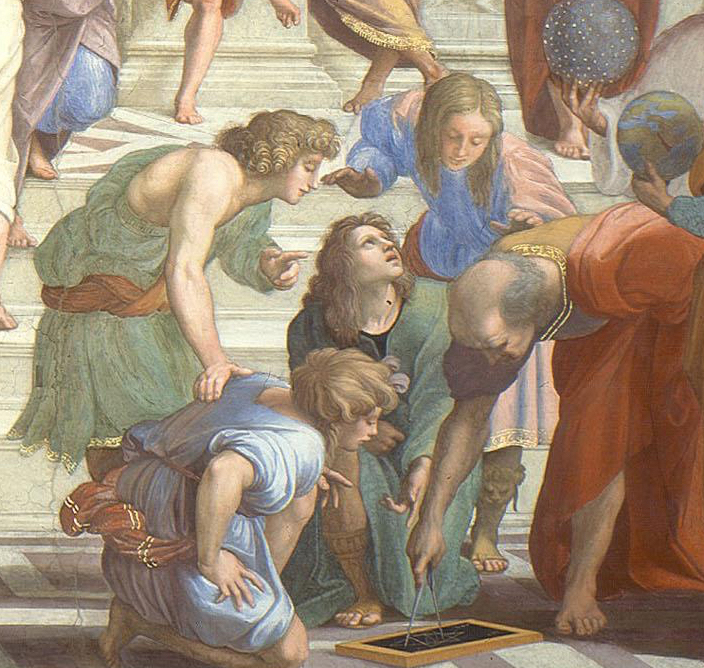Raphael, Parnassus
Crowned with the laurel of poetry and bearing the lyric lyre, the spirit of Poetry is flanked by the words of Virgil:
Numine Afflatur ("Inspired by the Spirit"). Since her left arm rests on a (possible) bust of Homer, the book in her right hand may be a volume of The Iliad and The Odyssey.
(Click the image for a lightbox view)
The Parnassus fresco represents poetry, the fourth of the classical ideas of human knowledge, along with religion, philosophy and law as pictured on the other three walls of the stanza. Apollo, the muse of poetry, plays a bowed string instrument like a vielle. Surrounding him are the nine muses (Calliope for epic poetry, Clio for history, Euterpe for lyric poetry, Erato for love poetry, Melpomene for tragedy, Polyhymnia for hymns, Terpsichore for dance, Thalia for comedy, and Urania for astronomy). In addition, Raphael includes nine ancient poets (including a blind Homer whose face is modeled on the recently discovered Laocoön), and nine contemporary poets (including Boccaccio and Dante).
Raphael was an admirer of Mantegna, and may have known this work, painting in Mantua in 1497 for Isabella d'Este. The treatment of Parnassus by the two painters, though, is radically different. For Mantegna, war and love (as embodied by Mars and Venus) govern the nature of the arts.








